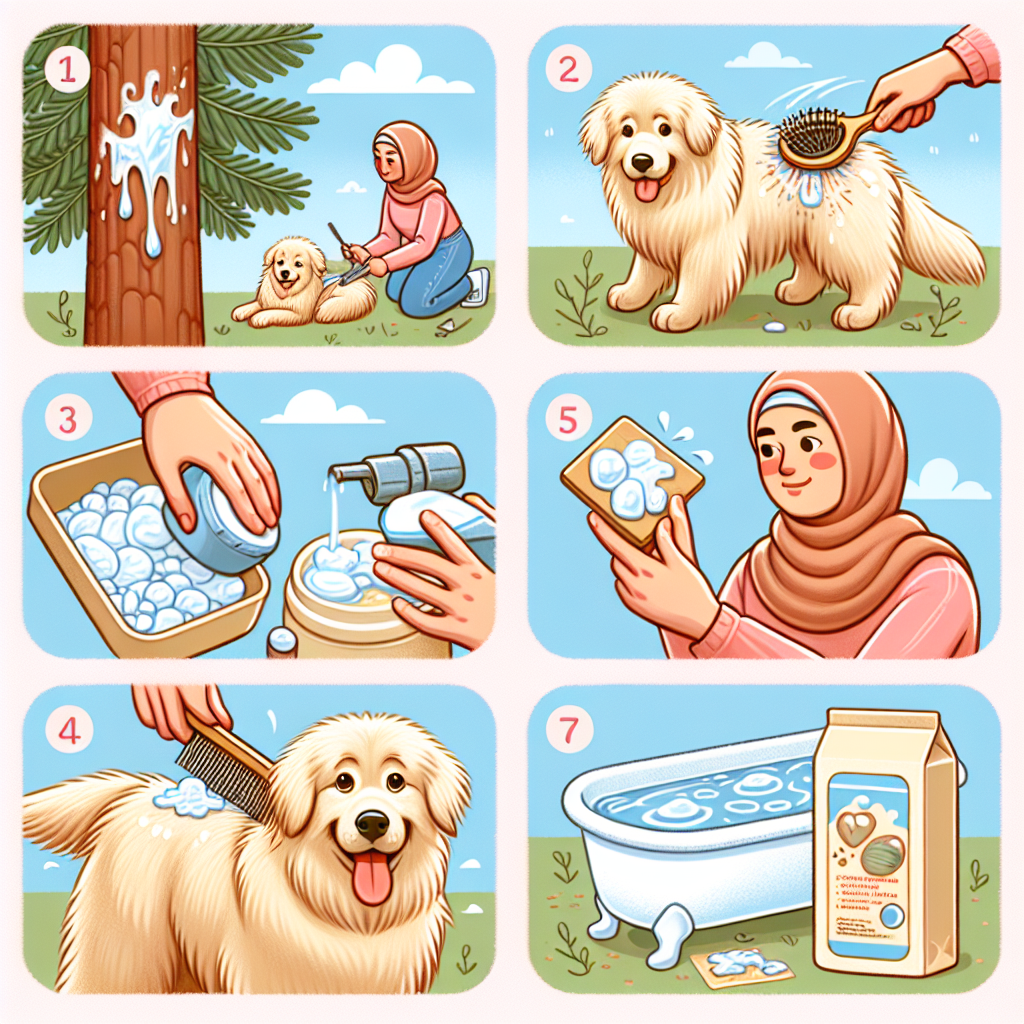===INTRO:===
If you’ve ever encountered the sticky, frustrating challenge of sap stuck in your dog’s fur, you know just how distressing it can be. This sticky substance not only clings stubbornly but can also harm your dog’s fur and skin, leading to discomfort or irritation. Thousands of pet owners face this same dilemma each year, often feeling at a loss as to how to effectively eliminate sap without causing harm. Fortunately, with the right techniques and insights, you can rid your pet of sap and restore their coat’s natural luster. Below, we delve into the intricacies of sap removal from your dog’s fur, providing you with valuable insights and techniques that are effective and safe.
Understanding the Challenges of Sap Removal from Fur
One of the primary reasons sap removal is challenging lies in its adhesive properties. Sap is sticky and can easily become entwined in your dog’s fur, creating a tangled mess that can be painful to comb out. Moreover, different types of sap can vary in thickness and stickiness, making it difficult to find a one-size-fits-all solution. Furthermore, the location of the sap can complicate removal; areas near sensitive skin or delicate parts of your pet’s body require extra caution during the cleaning process.
Another factor to consider is the emotional distress that may occur for both pet and owner during this situation. Dogs are often anxious when they’re being groomed or handled in a way that is unfamiliar. If a dog feels discomfort during the removal process, they may resist, leading to a more complicated cleanup and potentially causing injury. Therefore, the emotional well-being of your pet should be paramount during sap removal, making effective, gentle cleaning techniques crucial.
Additionally, some commercial cleaning agents can be harmful to your dog’s skin or coat. Many products contain chemicals that, while effective at dissolving sap, can lead to irritation or allergic reactions. Thus, understanding the right methods and tools for sap removal not only ensures your dog’s comfort but also preserves the quality of their fur. By being aware of these challenges, you can look for proven techniques that address both the physical and emotional aspects of this task.
Proven Techniques to Safely Clean Your Dog’s Coat
When it comes to removing sap from your dog’s fur, certain techniques have proven to be effective and safe for both your pet and their coat. One reliable method involves using natural oils, such as olive oil or coconut oil. These oils are not only effective at breaking down the sticky substance but also beneficial for your dog’s skin and coat health. To apply, simply rub a small amount of oil onto the affected area, allowing it to soak for a few minutes before gently combing the fur with a wide-toothed comb. This technique minimizes discomfort while gradually loosening the sap.
Another technique that many pet owners may not consider is the use of corn starch or baking soda. These powdered substances can absorb the sap, making it easier to brush out. Sprinkle a generous amount over the sticky area and let it sit for about 10 minutes. Afterward, gently comb through the fur to remove both the powder and the sap. This method is particularly useful for larger clumps of sap, as it can reduce the overall mess and make the cleanup process smoother.
Lastly, if the sap has hardened or is particularly stubborn, a warm, damp washcloth can work wonders. Soak the washcloth in warm water and place it against the sap for a few minutes to soften it. This approach allows you to gently scrape away the sap without causing pain or damage to your pet’s coat. Combining these techniques will not only help remove sap effectively but also ensure your dog remains calm and comfortable throughout the process.
===OUTRO:===
In conclusion, while the task of removing sap from your dog’s fur may seem daunting, understanding the challenges and employing the right techniques can make all the difference. By using natural oils, powders, and warm cloths, you can effectively eliminate sap while keeping your pet safe and comfortable. Remember, patience is key—take your time and ensure your dog remains at ease during the process. With these expert strategies in hand, you can tackle sap removal head-on and restore your furry friend’s coat to its former glory. If you have any other tips or experiences to share, feel free to leave a comment below and join our community of dedicated pet owners!
Measuring Your Dog’s Height: A Comprehensive GuideUnderstanding How Dogs Become Infested with FleasUnderstanding the Lifespan of Pug Dogs: What to ExpectRelevant LinkRelevant LinkRelevant Link
